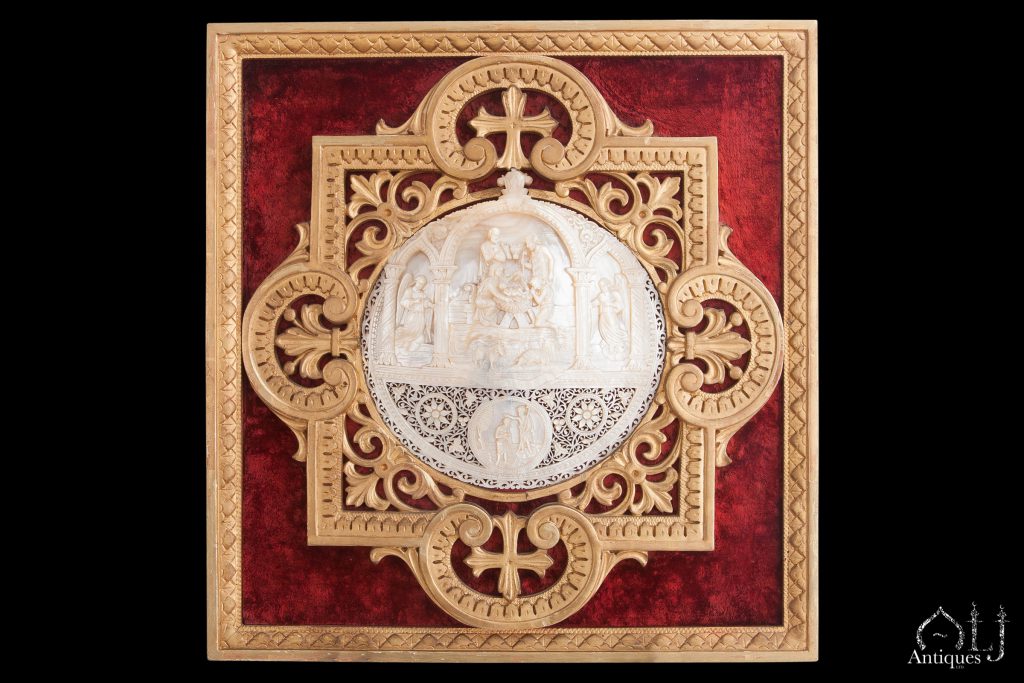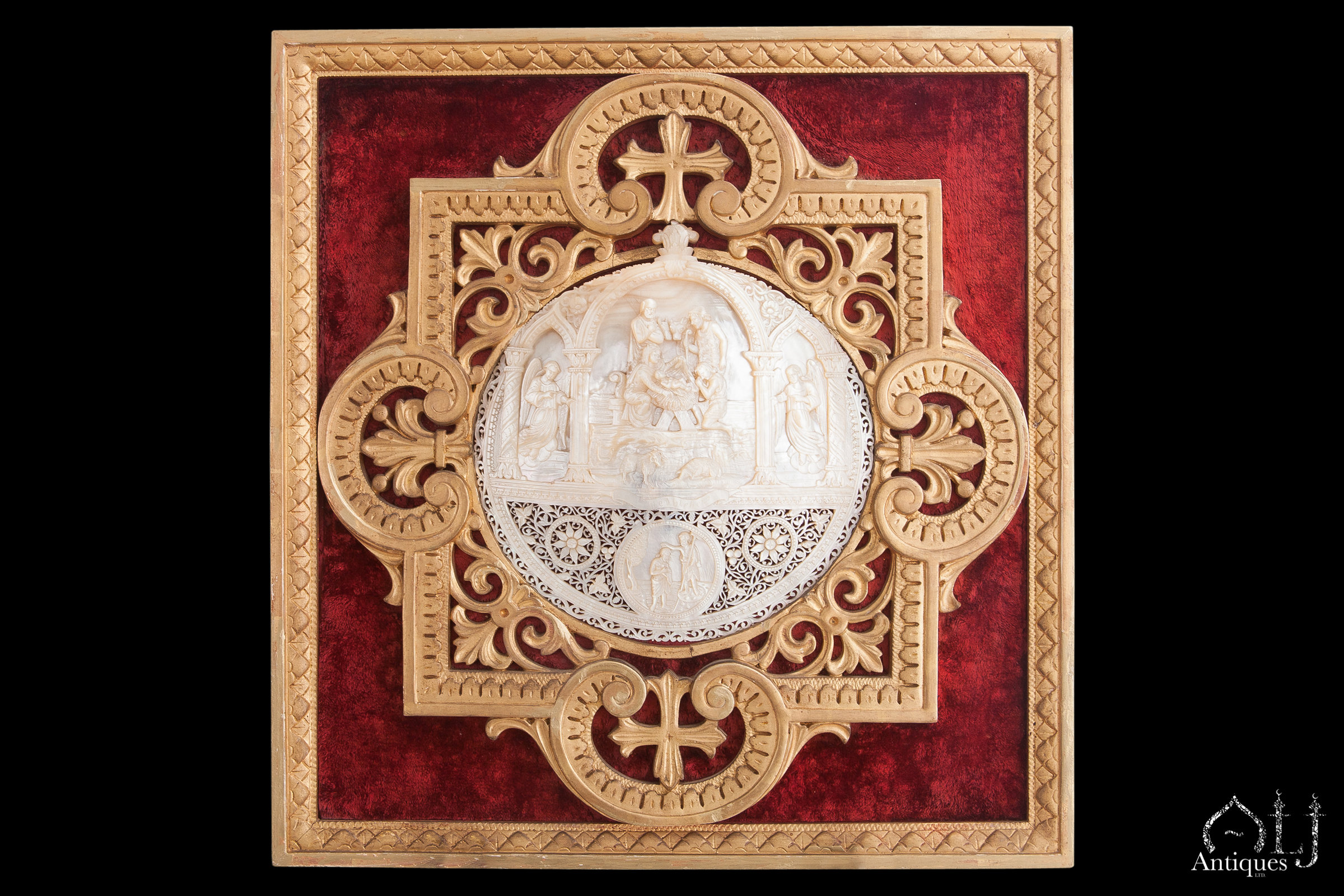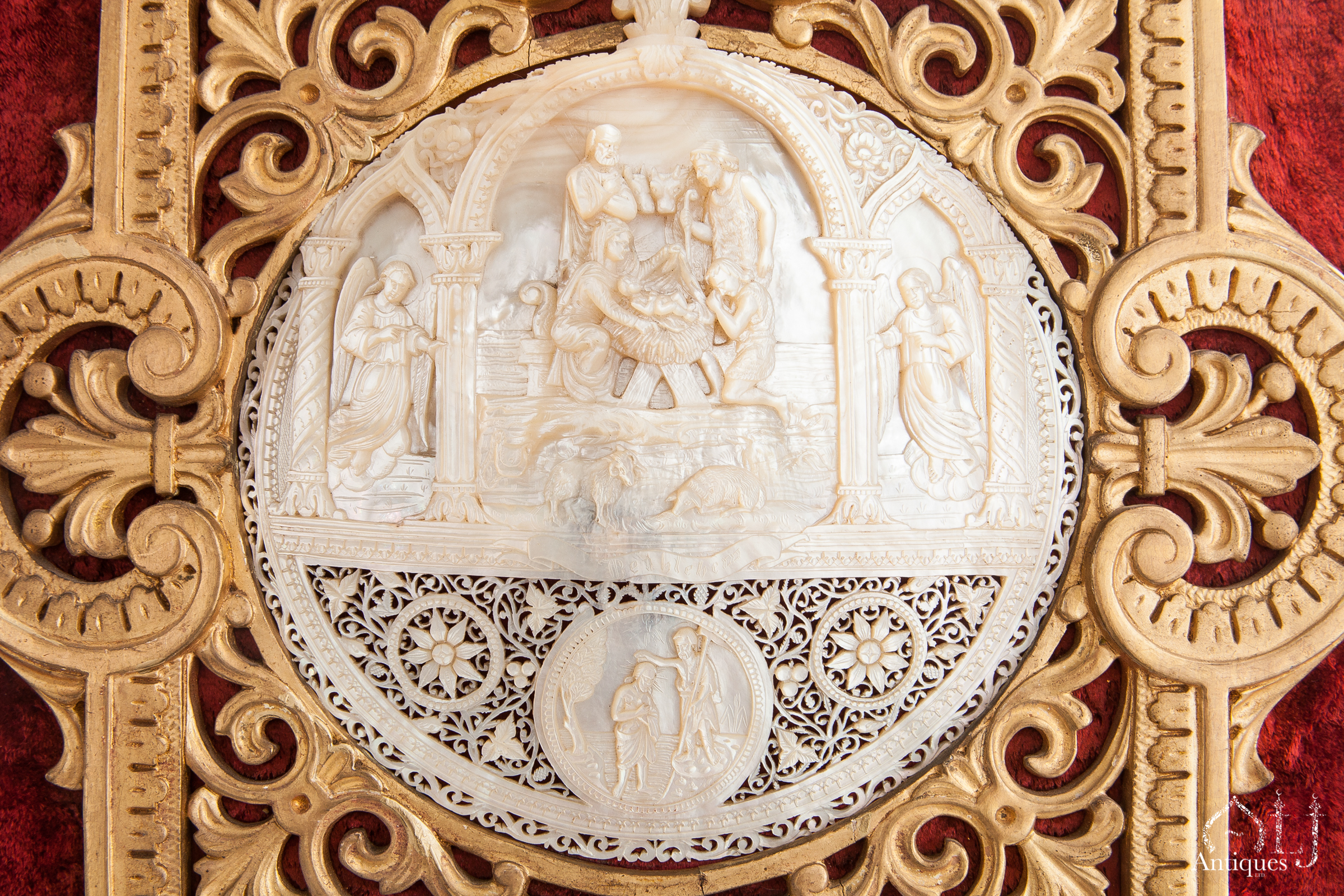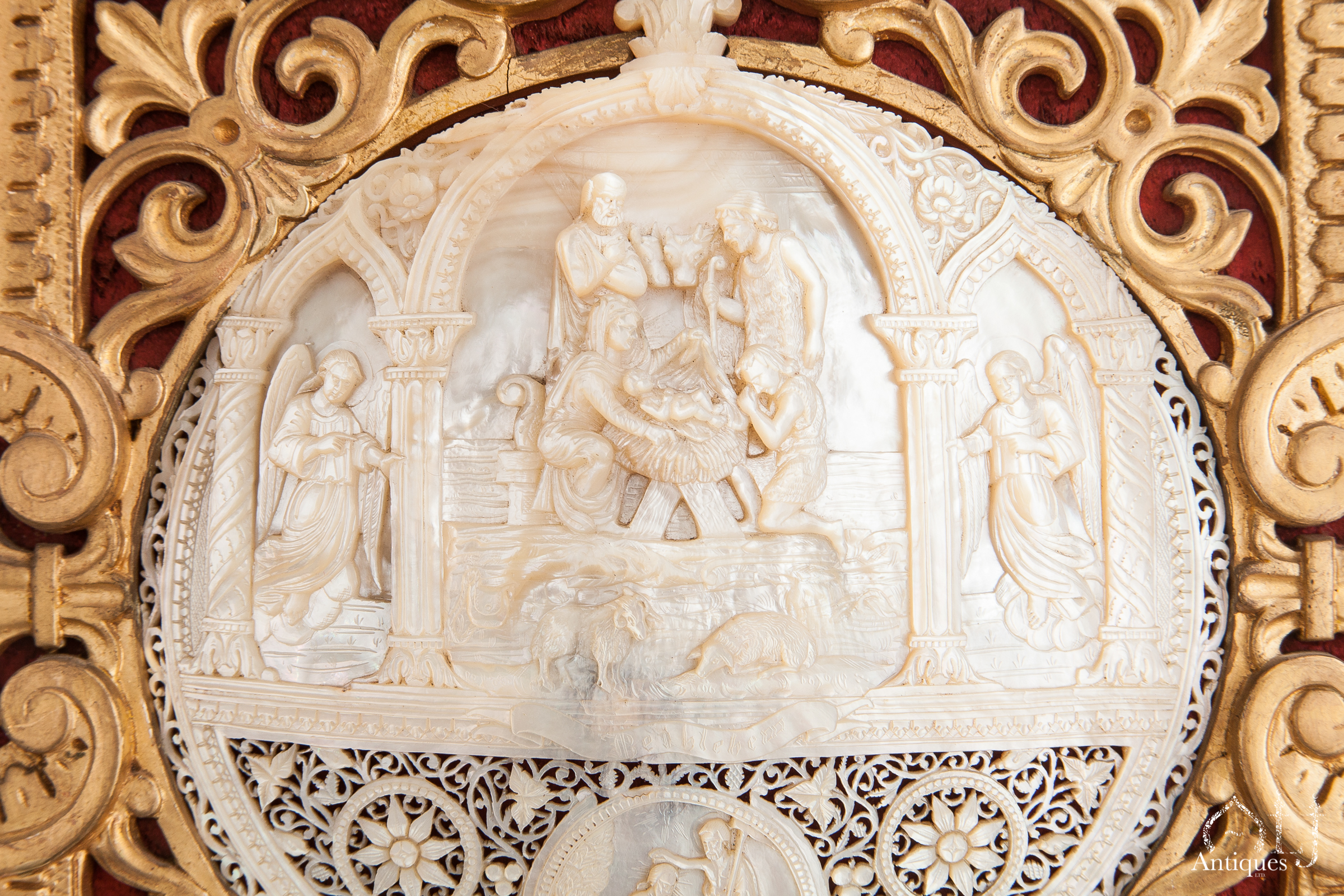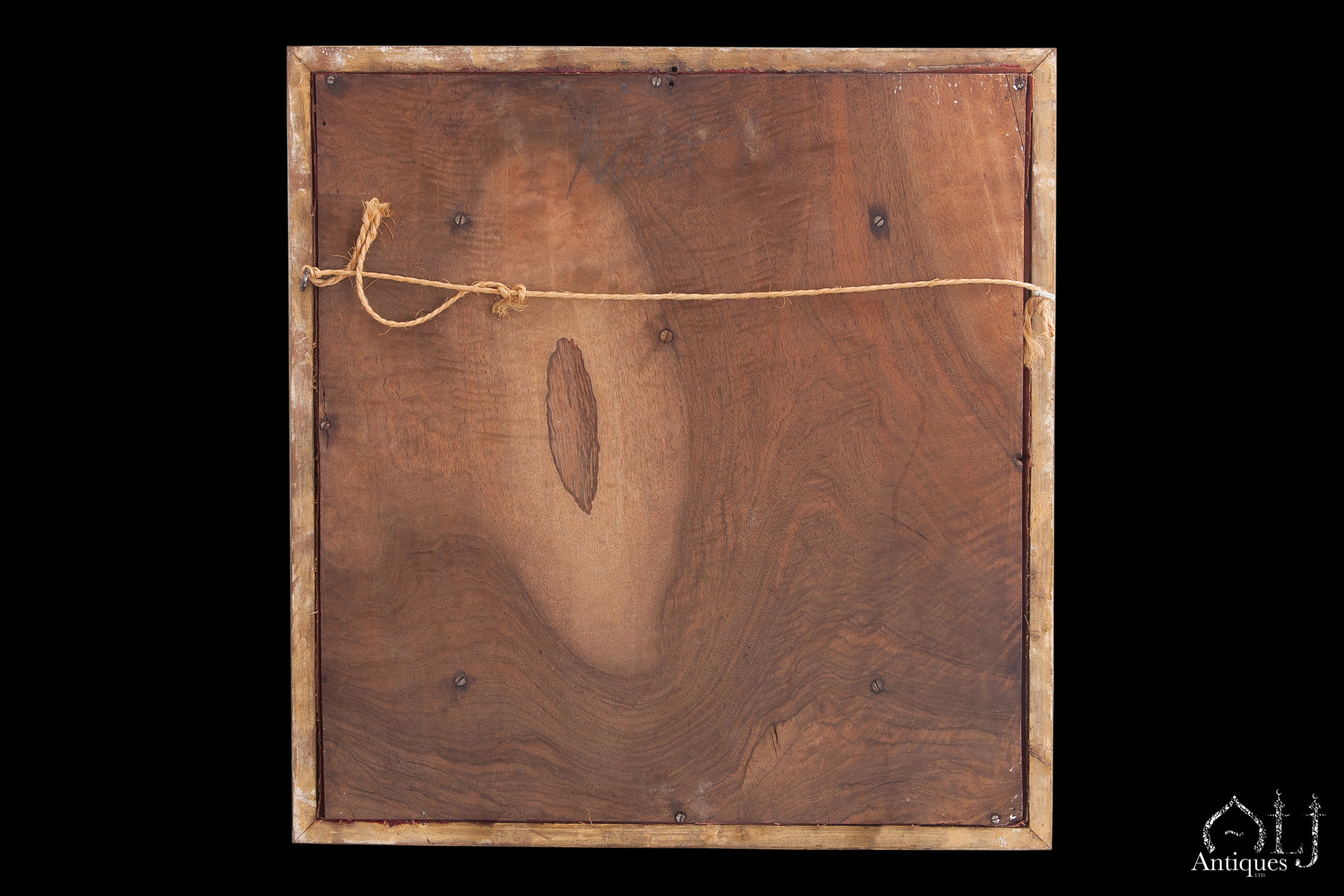Description
Gifts Presentation from the Holly Land includes the very popular carved and engraved complete polished shell, which represents an icon, which was mainly produced in Bethlehem and occasionally in Jerusalem.
Different sizes of shells were carved and engraved as religious Christian Icons, and were made by masters achieving high artistic craftsmanship that reflects the long standing tradition of Christian art.
The majority of carved shells were depicting Gospel subjects such as The Nativity of Christ, The Last Supper and The Ascension.
Other rare subjects were also produced to satisfy Jewish, Muslim and Ottoman tastes, like the scene of The Dome of the Rock, which is a sacred scene for both Jews and Muslims. It is considered as the holiest place for the Jewish faith. Other rare Biblical scenes and sites have also been carved and engraved. Other examples of rare subjects were made for the Muslim and Ottoman taste, such as views of old Jerusalem, Quranic verses and the Crescent and Star motif. Carved shells were also used as wonderful linings to decorate the backside of hand mirrors.
The Topkapi Palace Museum in Istanbul has some beautiful examples of mother of pearl carvings.
Generally, Icons were inscribed at the front and occasionally at the backside of the shell with the customers preferred language such as Latin, Greek, English, Italian, French, Armenian, etc. The rather brief details generally include the title or the definition of the subject of the icon, the place where it was made, either Bethlehem or Jerusalem, the year of production, the maker’s name and occasionally to whom it was made or gifted.
The value of these shells differs, fine and large carved shells were usually scarce and more expensive.
The upper part of our present lot shows the Nativity scene, which has followed the popular example set by Francis of Assisi, who famously depicted the Nativity scene in this way after his trip to the Holy Land. His depiction of the Nativity scene shows Our Lady Mary in an arched manger about to cover Jesus tenderly in His humble cradle, and Joseph kneeling down next to the newborn Baby. The scene also shows one of the shepherds who flocked to worship the newborn King, and one of the three Wise Men standing at each side of the cradle. The presence of the Ox, the Donkey and the Sheep has become a feature of most scenes of the Nativity, and they are all shown in this lot. The two guarding winged angles, which are usually associated with this scene, appear here, one on each side, giving the glad tidings to the world of the birth of Jesus.
The lower part has three roundels set in a magnificently designed open work. The central roundel depicts The Baptism of Jesus Christ by John the Baptist in the Jordan River, after the descent of the Holly Spirit in the shape of a Dove from the havens and resting upon Him.
For a similar or comparable example, please see El Arte Palestino De Tallar El Nacar, by Enrique Yidi Daccarett, Karen David Dacccarett & Martha Lizcano Angarita Lot No. 27 page 49.
For another example, please see Pilgrim Treasures (Byzantium Jerusalem) from The Hermitage, Hermitage-Amsterdam Exhibition, lot No. 187 which was exhibited in the Museum of Ethnography, Leningrad, pages 30 & 120.
Condition: Immaculate.
Dimensions (without frame):
Height 21 cm
Width 20 cm
Dimensions (with frame):
Height 22 cm
Width 39.8 cm

